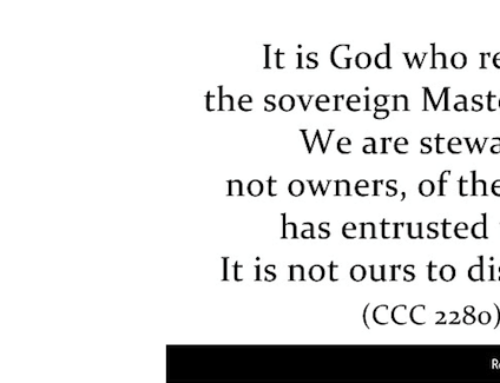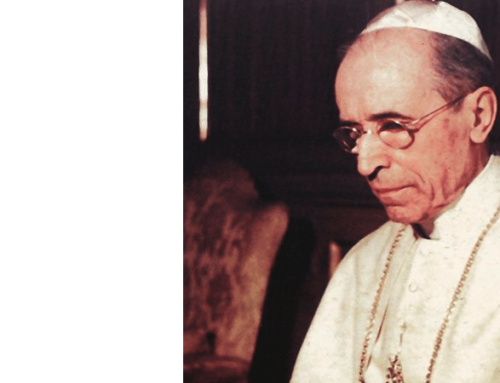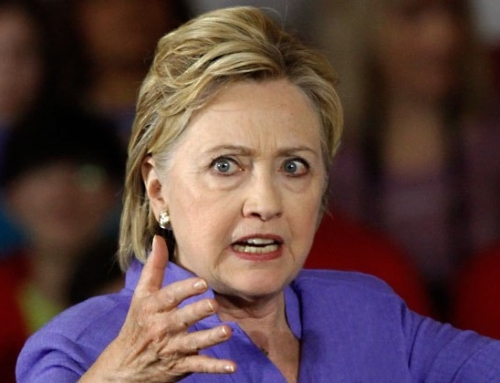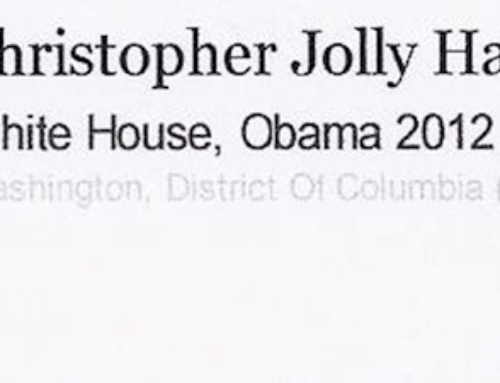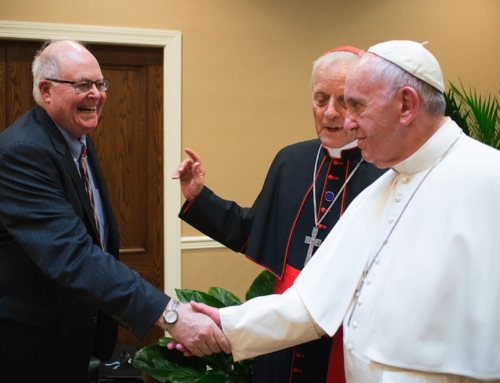by Sr. Margherita Marchione, M.P.F.
(Catalyst 4/1999)
Members of the media seem to deliberately falsify historical facts about the Holocaust, periodically renewing their attacks on Pope Pius XII. Unfortunately these false statements can engender the same hateful feelings that in the past have led to both anti-Catholicism and anti-Semitism.
In the words of the Jewish-Hungarian scholar, Jeno Levai, it is a “particularly regrettable irony that the one person [Pope Pius XII] in all of occupied Europe who did more than anyone else to halt the dreadful crime and alleviate its consequences is today made the scapegoat for the failures of others.”
On October 15, 1944, John W. Pehle, executive director of the United States War Refugee Board, paid tribute to many non-Jewish groups and individuals who had shown a true Christian spirit in support of the persecuted during World War II. He stated: “The record of the Catholic Church in this regard has been inspiring. All over Europe, Catholic priests have furnished hiding places and protection to the persecuted. His Holiness, Pope Pius XII, has interceded on many occasions in behalf of refugees in danger.”
Pehle’s words, in a speech delivered in Boston, to “move forward onto a world of peace, where human dignity and the brotherhood of man may once more prevail,” re-echo the sentiments of the “Architect for Peace” during this period, Pope Pius XII, whose contribution toward peace and justice cannot be denied.
Indeed, Pius XII was the personification of faith in a terror-torn world and a bulwark of peace. His words may well be applied to present-day media: “That which seems to us not only the greatest evil but the root of all evil is this—often the lie is substituted for the truth and is then used as an instrument of dispute.”
The Holocaust was both anti-Jewish and anti-Christian. Far from Christian in origin, Nazism was pagan and racist.
On May 8, 1945, Germany surrendered unconditionally to the Allies. More than 11 million civilians had been murdered since the German invasion of Poland. In the Introduction to Atlas of the Holocaust, Martin Gilbert states that “in addition to the six million Jewish men, women, and children who were murdered, at least an equal number of non-Jews was also killed, not in the heat of the battle, not by military siege, aerial bombardment or the harsh conditions of modern war, but by deliberate, planned murder.”
The Vatican document, “We remember: A Reflection on the Shoah” issued on March 18, 1998, received mixed reviews in the media. On May 15, 1998, Edward Cardinal Cassidy, chairman of the Pontifical Commission that issued this document responded to the reactions of Jewish leaders at the 92nd annual meeting of the American Jewish Committee taking place in Washington, D.C. He condemned as myth the accusation that Pope Pius XII did not do enough to stop the Holocaust: “It is our conviction that in recent years his memory has been unjustly denigrated…. Monstrous calumnies… have gradually become accepted facts especially within the Jewish community.” He reiterated that the “anti-Semitism of the Nazis was the fruit of a thoroughly neo-pagan regime with its roots outside of Christianity, and in pursuing its aims it did not hesitate to oppose the Church and persecute its members also.”
Examples abound to document Cardinal Cassidy’s contention. In 1940, in a letter to be read in all churches entitled Opere et Caritate (“By Work and by Love”), Pope Pius XII instructed the Catholic bishops of Europe to assist all people suffering from racial discrimination at the hands of the Nazis.
Two years later, on July 26, 1942, the day after the Dutch bishops ordered – in all Catholic churches — a strong denunciation of the Nazi deportation of Jews, the Nazi occupation officers met in The Hague. The record of the meeting clearly states that because the Catholic bishops interfered in something that did not concern them, deportation of all Catholic Jews would be completed within that week and no appeals for clemency would be considered.
Among those sent to the Auschwitz gas chamber at that time was Edith Stein, a distinguished intellectual who, after her conversion from Judaism to Catholicism, became a Carmelite nun. On October 11, 1998, Edith Stein, known as Sister Benedicta of the Cross (1891-1942), was canonized by Pope John Paul II. Edith Stein was killed because she was Jewish, but is also true that the Nazis sent her and other converts to Auschwitz in retaliation for the Dutch Catholic bishops’ pastoral letter condemning Nazi atrocities.
Today there seems to be a great deal of space devoted to Pope Pius XII. Incredibly, despite the documentation available, countless inaccuracies and accusations continue to dominate the media. It is difficult to understand the criticism and false statements of contemporary “experts,” who undoubtedly fail to consult the 12 volumes of Vatican documents printed between 1965-1981, four of which deal exclusively with the humanitarian efforts of Pope Pius XII.
Indeed, it is time to right the injustice toward Pope Pius XII who saved more Jews than any other person, including Oscar Schindler and Raoul Wallenberg. Vatican records indicate that Pope Pius XII operated an underground railroad that rescued European Jews from the Holocaust. He used all possible diplomatic means to condemn Nazi atrocities and aid the persecuted Jews.
It is a known fact that both the International Red Cross and the World Council of Churches agreed with the Vatican that relief efforts for the Jews would be more effective if the agencies remained quiet. When the Catholic hierarchy of Amsterdam spoke out vigorously against the Nazi treatment of the Jews, the Nazi response was redoubling of deportations. Ninety percent of the Jews in Amsterdam were deported to the concentration camps.
On the morning of October 16, 1943, the Nazis started a roundup of Rome’s eight thousand Jews who were marked for elimination: one thousand were captured. The Jews of Rome disappeared into Rome’s monasteries and convents, where they were safe until the war was over. There is documentation about an official, personal protest through the papal secretary of state. He delivered it on Pope Pius XII’s orders that same fateful morning. The operation was suspended, no doubt because of the Pope’s intervention. This gave the remaining eight thousand Jews the opportunity to hide from the Nazis.
If Pope Pius XII had protested, not only would he have been unsuccessful in halting the destruction, but he would have endangered the lives of thousands of Jews hidden in the Vatican, convents, and monasteries.
One story of compassion and love appeared in the November 1, 1943, issue of Life magazine. It began in 1941, when 150 German Jews fled from Germany armed with visas for the United Sates. In order to obtain transportation, they sought refuge in Italy. But soon, the war had become a World War. The Jews were immediately chained and arrested.
For three years they were interned in the town of Campagna, near the Bay of Salerno, living in a monastery and enjoying the loving care of the local residents. When the Allies bombed the monastery, the Jews fled to the mountains. Within days the Nazis took control of the town and they began shooting the Italians.
When the Jews learned that the Italians were without medical assistance, four Jewish surgeons, returned to the town to care for the many casualties. These Jews knew the Nazis were searching for them; if caught, they would have been shot or deported. Yet, they did not hesitate. Without medical equipment, they performed 40 major operations in two days and saved the Italians.
At the end of World War II, Dr. Joseph Nathan, representing the Hebrew Commission, addressed the Jewish Community and expressed heartfelt gratitude to those who protected and saved Jews during the Nazi-Fascist persecutions. “Above all,” he stated, “we acknowledge the Supreme Pontiff and the religious men and women who, executing the directives of the Holy Father, recognized the persecuted as their brother and, with great abnegation, hastened to help them, disregarding the terrible dangers to which they were exposed.”
It is a sad but indisputable fact that the official publications of the Holy See, documents of the Nuremberg Trial Proceedings, state papers of the warring countries, and published Vatican War Documents have been largely ignored by those who would impugn the Pope’s integrity. The twelve volumes of The Acts and Documents of the Holy See demonstrate the close collaboration between the Holy See, Jewish representative bodies, the international Red Cross, and allied governments. No one can deny that numerous protests were made by Pius XII. Despite the wealth of documentary evidence proving Pius XII’s heroism, one of the biggest lies of our times – that the Pope was “silent” about Hitler’s efforts to exterminate the Jewish people – continues.
In an effort to rectify the calumnies that the media continue to print about the role of Pius XII, the Vatican Press Office Director Joaquin Navarro-Valls responded to accusations that the Holy See has not opened its archives from the period of the Holocaust.
Navarro-Valls repeated that documents covering the period from March 1939 to May 1945 have been published and there is nothing to add to the five thousand documents already published in twelve volumes. On December 3, 1998, the Vatican Press Officer stated: “The exhaustive scrutiny of documents of the Vatican Archives allows us to state that there is nothing – I repeat, nothing – to add to what has already been published…. Whoever makes insinuations contrary to what the Holy See has repeatedly stated, should produce concrete evidence. This has, naturally, never happened.”
The media have covered the accusations; what about covering the responses? Few, if any, have been printed.


